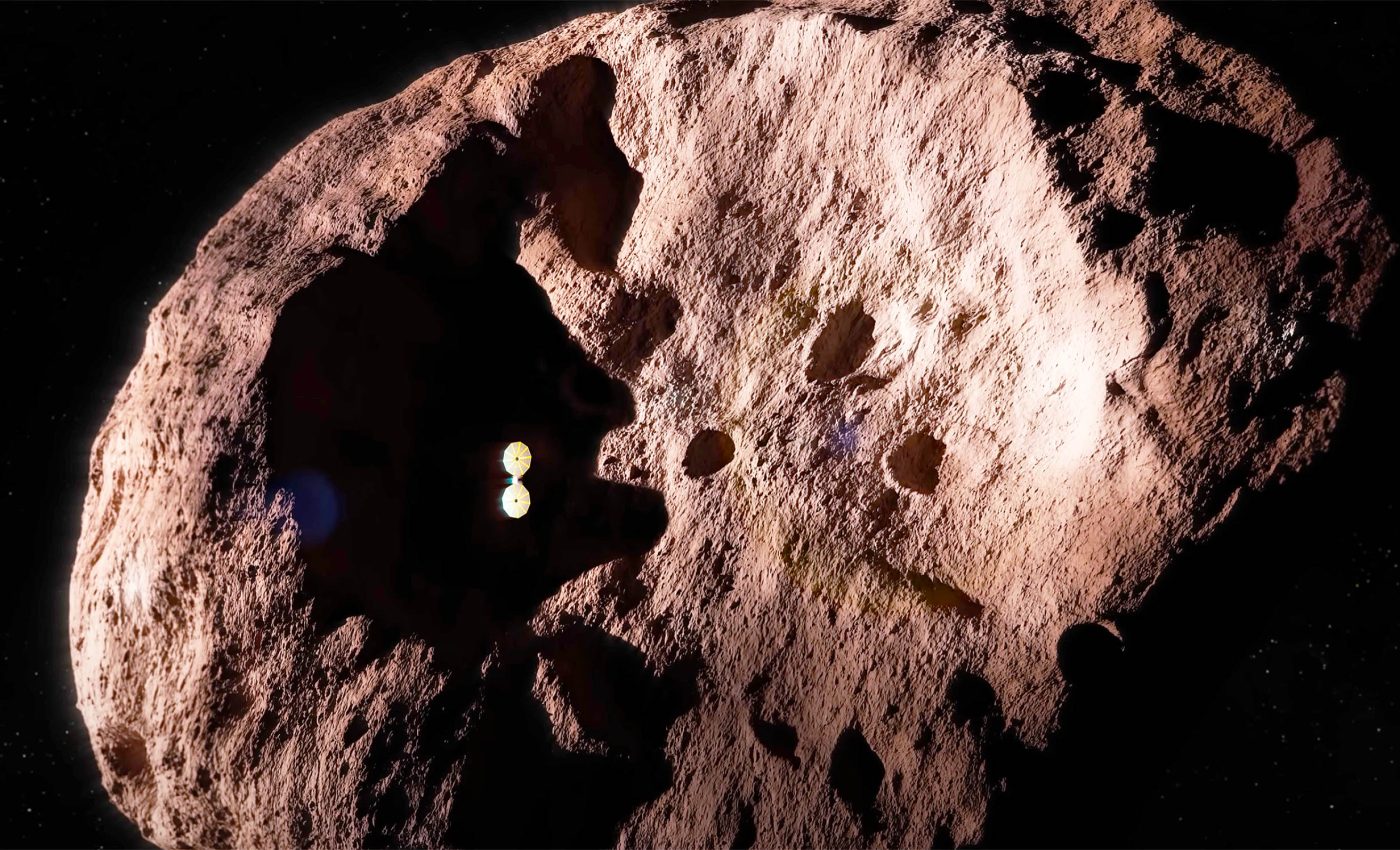
Spacecraft captures rare photo of a remnant from our solar system's formation
NASA’s Lucy spacecraft captured a striking image of the asteroid Donaldjohanson during its close flyby on April 20, 2025.
The snapshot reveals that the asteroid is an elongated contact binary – an object formed when two smaller bodies merge after a collision.
This flyby marked a major milestone as Lucy completed its second encounter in its planned 12-year journey across the solar system.
Understanding the Lucy asteroid mission
NASA’s Lucy spacecraft is on a bold journey to explore the Trojan asteroids – ancient remnants of our solar system that share Jupiter’s orbit around the Sun.
Launched in October 2021 by scientists from the Southwest Research Institute, Lucy swings past a total of Earth three times, using gravity assists to gain the speed and trajectory it needs to reach its distant targets.
Over its 12-year mission, the spacecraft will visit eight asteroids, including one in the main asteroid belt and seven Trojans, making it the first mission to examine this unique population up close.
The Trojans are time capsules from the solar system’s early days, and scientists believe they hold vital clues to how the planets formed and migrated.
By photographing their surfaces, analyzing their composition, and tracking their movement, Lucy aims to unlock secrets about our cosmic origins.
Lucy’s busy road ahead
Over the next several years, Lucy will visit a record number of asteroids. It is scheduled to pass three asteroids in the main asteroid belt and eight Trojan asteroids that travel in Jupiter’s orbit.
This journey offers a rare opportunity to study these time capsules from the formation of our planets.
Last month, April 20 marked a big moment for the team as Lucy completed its second flyby. The spacecraft’s next destination is the Trojan asteroid Eurybates and its small satellite Queta, with the encounter set for August 2027.
Each stop along the way brings scientists closer to understanding how the solar system grew and evolved.
The story behind Donaldjohanson’s name
The Lucy spacecraft is named after the fossilized skeleton of a prehuman ancestor from East Africa, famously known as “Lucy.” It carries forward the spirit of discovery that the fossil represents.
During this latest flyby, NASA made history by visiting a planetary body named after a living person – a first for the agency.
The asteroid Donaldjohanson received its name only after becoming one of Lucy’s targets. It was named to honor Dr. Donald Johanson, the paleoanthropologist who discovered the original Lucy fossil in Ethiopia.
His work reshaped how we understand human evolution, and now his legacy travels through space alongside a new era of exploration.
“Asteroid Donaldjohanson has strikingly complicated geology,” noted Hal Levison, principal investigator for Lucy at Southwest Research Institute.
“As we study the complex structures in detail, they will reveal important information about the building blocks and collisional processes that formed the planets in our Solar System.”
Seeing the past through Lucy’s eyes
Lucy’s journey has just begun. The spacecraft continues to cruise through space with a full list of destinations ahead.
Each asteroid it encounters will offer more pieces to the grand puzzle of how our solar system came to be.

Through Lucy’s eyes, we are seeing the remnants of the past, stitched together in rock and ice.
It’s a journey that not only charts the ancient history of our cosmic neighborhood but also reminds us of the human drive to explore – from Earth’s earliest ancestors to the distant edges of the solar system.
Significance of small asteroids
At first glance, asteroids like Donaldjohanson might seem small and unremarkable compared to the giant planets or dazzling moons of the solar system.
But for scientists, these smaller bodies hold some of the most important clues about how everything we see today came to be.
Asteroids are often described as “fossils” of the solar system. They have remained relatively unchanged for billions of years, preserving the conditions and materials from the time when planets were still forming.
Studying them is like opening a time capsule. Every rock, every crater, and every surface texture tells a story about ancient collisions, chemical changes, and the forces that shaped our cosmic neighborhood.
Insights into the early solar system
The contact binary shape of Donaldjohanson also raises interesting questions. Contact binaries are formed when two separate bodies slowly come together under mutual gravitational forces.
Understanding how and when this happens could reveal new insights about the early chaotic days of the solar system, when collisions were common and the building blocks of planets were still gathering.
Lucy’s mission goes far beyond just taking pictures. Scientists will analyze the colors, surface compositions, and structures of these asteroids to look for patterns.
They want to find out why some asteroids are darker, why some are rich in metals, and why others seem almost untouched since the beginning.
Each asteroid adds another piece to the larger puzzle of how the Earth, the other planets, and even life itself eventually emerged.
The discoveries that Lucy makes over the coming years could reshape what we know about our origins. It’s a reminder that sometimes, the smallest and most distant places hold big secrets.
Information for this article comes from NASA.
Image credit: NASA/Goddard/SwRI/Johns Hopkins APL/NOIRLab
—–
Like what you read? Subscribe to our newsletter for engaging articles, exclusive content, and the latest updates.
Check us out on EarthSnap, a free app brought to you by Eric Ralls and Earth.com.
—–













